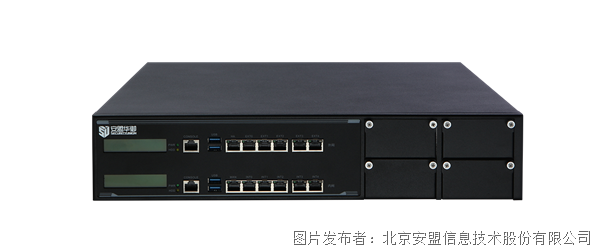2009年世界貿易報告(WORLD TRADE REPORT 2009)
| 【報告簡介】: |
| The World Trade Report 2009 was prepared under the general direction of Deputy Director-General Alejandro Jara and supervised by Patrick Low, Director of the Economic Research and Statistics Division,The principal authors of the Report were Marc Bacchetta, K. Michael Finger, Marion Jansen, Alexander Keck, Coleman Nee, Roberta Piermartini, Michele Ruta and Robert Teh. Trade statistics information was provided by the Statistics Group of the Economic Research and Statistics Division, coordinated by Hubert Escaith, Julia de Verteuil, Andreas Maurer and Jürgen Richtering. Other written contributions were provided by Rudolf Adlung, Lee-Ann Jackson, Jesse Kreier and Hiromi Yano. Aishah Colautti of the Economic Research and Statistics Division assisted in the preparation of the graphical input and Souda Tandara-Stenier of the Economic Research and Statistics Division prepared the Bibliography. Research assistance was provided by Arastou Khatibi, Joelle Latina, Thuy Nguyen, Thuy Thu Nguyen, Laura Rovegno and Joel Strange. Other Divisions in the WTO Secretariat provided valuable comments on drafts at various stages of preparation. The authors are particularely grateful to several individuals in the Agriculture and Commodities Division, the Appellate Body Secretariat, the Institute for Training and Technical Cooperation, the Legal Affairs Division, the Market Access Division, the Rules Division and the Trade in Services Division. The authors also wish to thank the following individuals from outside the WTO Secretariat who took the time to provide comments on drafts of the Report: Ilaria Accorsi, Kyle Bagwell, Chad Bown, Michael Finger,Jorge Miranda, Michael Moore, Douglas Nelson, Julio Nogués, Hildegunn Kyvik Nördas, Tom Prusa,Mauricio Reina, Robert Staiger and Maurizio Zanardi. The production of the Report was managed by Paulette Planchette of the Economic Research and Statistics Division in close cooperation with Anthony Martin, Serge Marin-Pache and Heather Sapey-Pertin of the Information and External Relations Division. Anthony Martin assisted by Paulette Planchette and Lidia Carlos Silvetti provided editorial assistance. Gratitude is also due to the translators in the Languages, Documentation and Information Management Division for their hard work. |
| 【報告目錄】: |
| CONTENTS ABBREVIATIONS AND SYMBOLS .......................................................................................................vii ACKNOWLEDGEMENTS .......................................................................................................................ix DISCLAIMER .........................................................................................................................x FOREWORD BY THE DIRECTOR-GENERAL ................................................................................xi EXECUTIVE SUMMARY ........................................................................xiii I THE TRADE SITUATION IN 2008-9 ........................................... 1 INTRODUCTION ......................................................................... 1 B OVERVIEW OF TRADE AND PRODUCTION DEVELOPMENTS IN 2008-09 C MERCHANDISE TRADE, VOLUME (REAL) TERMS, 2008 ........... 5 D MERCHANDISE AND SERVICES TRADE, VALUE (NOMINAL) TERMS, 2008 II TRADE POLICY COMMITMENTS AND CONTINGENCY MEASURES ....... 19 A INTRODUCTION ..................................................................... 19 B FLEXIBILITY IN TRADE AGREEMENTS .......................................... 21 1. Economic theories of trade agreements and the role of flexibilities ..... 21 2. Circumstances for suspension of commitments and flexibility measures built into the WTO agreements ..................................................30 Conclusions .................................................................................39 C ECONOMICS, DISCIPLINES AND PRACTICES .......................................................... 47 Safeguards ............................................................................. 47 2. Dumping and anti-dumping measures ...................................65 3. Subsidies and countervailing duties ........................................84 4. Other selected measures of contingency protection ............102 5. Choosing among different measures ..................................................... 114 6. Conclusions ..................................................................... 117 D EMPIRICAL EVIDENCE .........................................................................................127 1. Patterns and trends in the use of contingency measures .....................................................127 2. Contingency measures and the multilateral trading system ..............142 3. Factors explaining the use of trade contingency measures ............147 4. The economic impact of contingency measures .....................152 5. Conclusions ...............................................156 E CONCLUSIONS ............................................................159 BIBLIOGRAPHY .................................................................................................161 TECHNICAL NOTES ............................................................169
LIST OF TaBlES, CHarTS aNd BOXES I THE TRADE SITUATION IN 2008-09 Tables Table 1 GDP and merchandise trade by region, 2006-08 .................... 6 Table 2 World exports of merchandise and commercial services, 2008 ..... 8 Table 3 World exports of commercial services by major category, 2008 .... 9 Charts Chart 1 Real GDP and trade growth of OECD countries, 2007-08 ............ 1 Chart 2 Prices of selected primary products, January 2002-January 2009 .. 4 Chart 3 Growth in the volume of world merchandise trade and GDP, 1998-2008 Chart 4 Real merchandise trade growth by region, 2008 .................. 6 Chart 5 Export prices of selected primary products, 2006-08 .............. 7 Chart 6 Dollar exchange rates of selected major currencies, January 2000-January 2009 Appendix App. Table 1 World merchandise trade by region and selected country, 2008 App. Table 2 World exports of commercial services by region and selected country, 2008 App. Table 3 Merchandise trade: leading exporters and importers, 2008 App. Table 4 Merchandise trade: leading exporters and importers, 2008 (Excluding intra-EU (27) trade) ...... 16 App. Table 5 Leading exporters and importers in world trade in commercial services, 2008 App. Chart 1 Monthly merchandise exports and imports of selected economies, January 2006-February 2009 ..... 11 II TRADE POLICY COMMITMENTS AND CONTINGENCY MEASURES B. FLEXIBILITY IN TRADE AGREEMENTS Tables Table 1 A categorization of circumstances and arguments for a temporary increase in protection ..................... 31 Boxes Box 1 Terms-of-trade and the international cost-shifting problem ...........22 Box 2 Time-inconsistency ..........................................................23 Box 3 Commitment versus flexibility: the case of safeguards in the GATT and WTO C. ECONOMICS, DISCIPLINES AND PRACTICES Tables Table 2 Suspension of concessions pursuant to SGA Article 8.2 ............64 Charts Chart 1 Binding coverage including and excluding subheadings with an overhang exceeding 20 resp. 15 percentage points, by region ........................107 Chart 2 Binding coverage including and excluding subheadings with a binding overhang exceeding 15 percentage points, by product category ......................108 |
文章版權歸西部工控xbgk所有,未經許可不得轉載。












 服務咨詢
服務咨詢